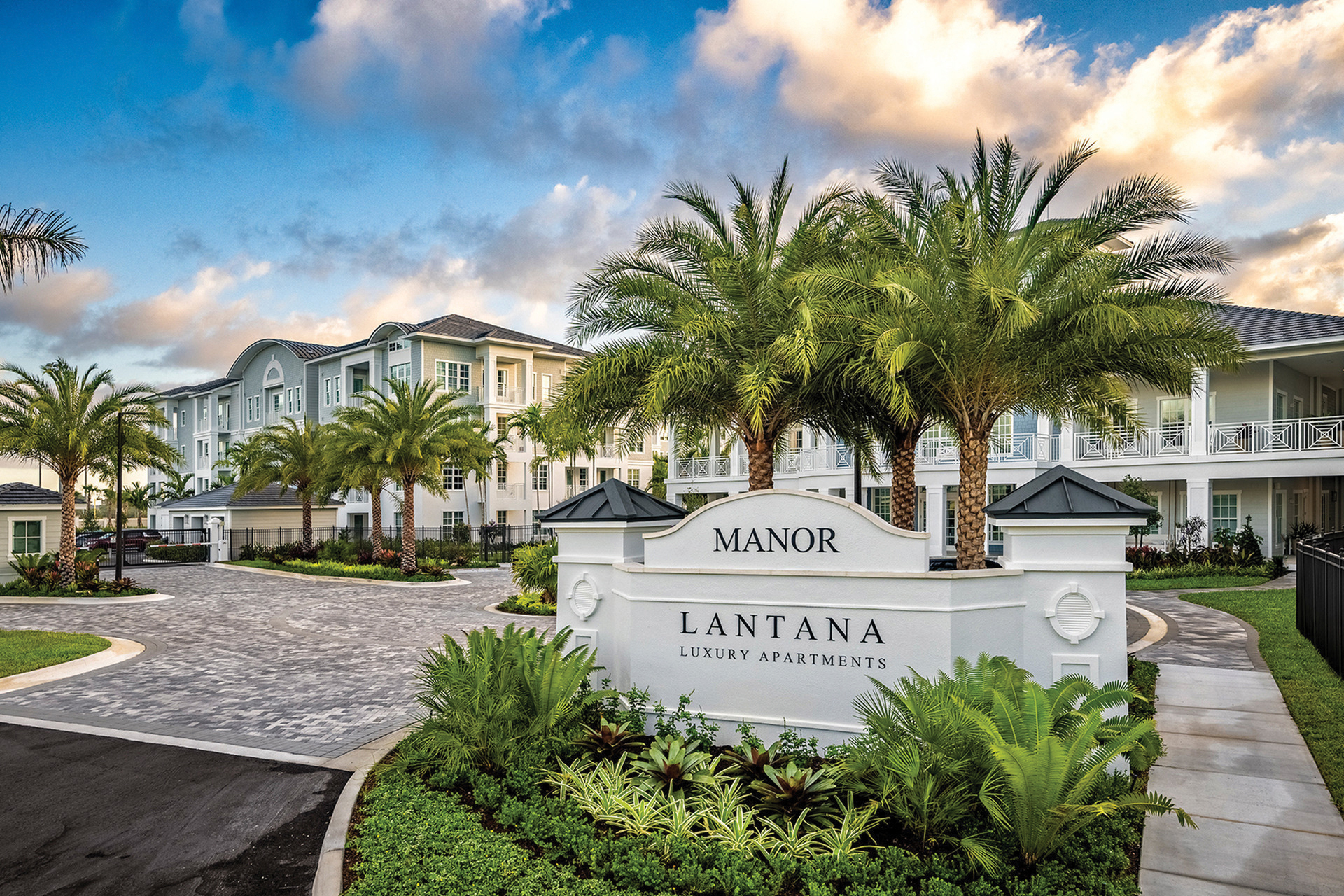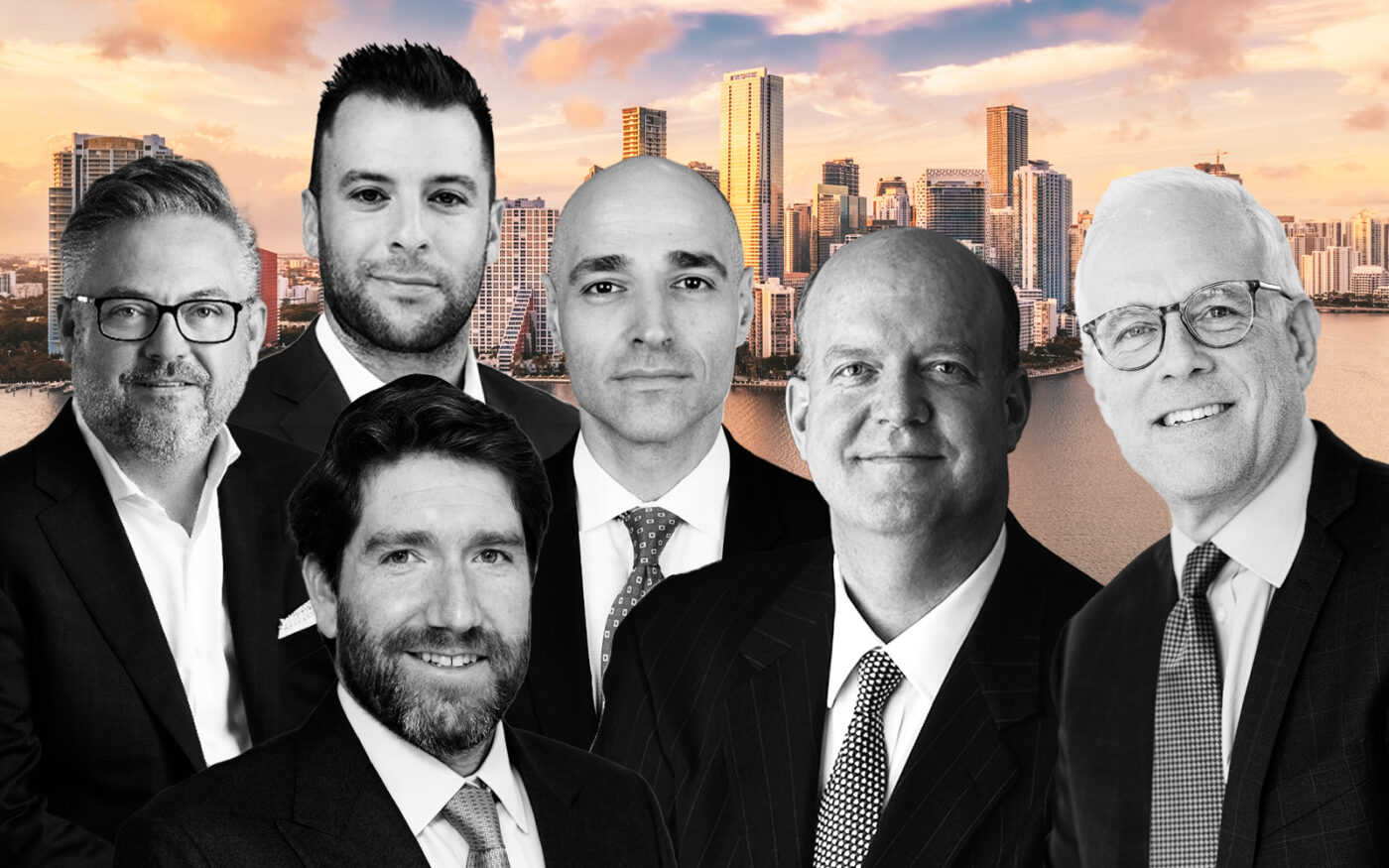South Florida multifamily investment sales came to a standstill late last year, crippled by expensive financing and skyrocketing windstorm and other property insurance premiums.
A few buyers, however, made moves.
This past June, Praedium Group dropped $138 million for a new Lantana apartment complex. The firm used its investment Fund X, allowing Praedium to use equity for about half the price. It also borrowed $76 million from Northwest Mutual Life Insurance with a fixed rate in the mid-5 percent range, a better deal than this year’s more common rates hovering above 7 percent.
Praedium is part of a cadre of players still in the South Florida multifamily game this year. Their deals provide insights into how creative investors are thinking about their capital stack.
The Real Deal analyzed recent sales, uncovering a common profile among buyers. At least half relied on discretionary funds, which already are capitalized with equity from institutional investors and family offices. In all of the deals that included financing, buyers steered clear of expensive bank and debt fund loans. Instead, they secured more favorable terms by either assuming sellers’ notes or borrowing from Freddie Mac and insurers.
Lack of competition also helped. Buyers were able to get discounts of between 15 and 30 percent compared to last year, brokers said.
“If you are a low-leveraged, all-cash buyer, you are acquiring assets without having to compete with the vast majority of buyers who need debt,” said Robert Given of CBRE. “It’s a very good time for you to buy core assets right now.”
Yet the deals raise questions about why sellers let go of their properties at a discount now instead of waiting for values to pick up. While records showed no sellers were in default or had watchlisted CMBS debt, experts cautioned that woes still could have been brewing, strong-arming some to sell and exit floating-rate debt.
“People sell assets for one of two reasons,” said real estate investment banker David Eyzenberg. “Because they think they are going to make money — or because they have to.”
Below replacement cost
In June, Jordan Slone’s Harbor Group International swooped in on Palm Beach County.
Through its opportunity fund, it paid $75 million for the 288-unit Pine Ridge apartment complex and $105.5 million for the 280-unit Locklyn West Palm.
Harbor assumed the Pine Ridge seller’s $37.2 million floating-rate loan and bought a cap, limiting the rate to 5 percent. For the Locklyn deal, it took out a $56.6 million Freddie Mac loan at a fixed 5.1 percent interest rate.
The firm paid $376,800 per unit for Locklyn and $260,400 per apartment for Pine Ridge. That’s a discount from Palm Beach County’s record average last year of $385,200 per unit, according to Cushman & Wakefield.
“Replacement cost for an asset like that [Locklyn] will definitely be north of $400,000 a door,” said Yisroel Berg, Harbor’s chief investment officer for multifamily.
Harbor is betting on an upside for Pine Ridge, which was 25 percent occupied at the time of the sale. It expects tenant concessions to expire and the property to lease up. “We are buying some really good value,” said Berg.
“If you are a low-leveraged, all-cash buyer, you are acquiring assets without having to compete with the vast majority of buyers who need debt.”
While interest rate caps are pricey, it’s still a better deal than paying high rates for new debt, he said.
Federal Capital Partners paid $53.1 million for the Avana Cypress Creek apartment complex in North Lauderdale, and lucked out when it came to loan assumptions. Records show FCP took over the seller’s $29.9 million debt — at a fixed 3.83 percent rate, a steal compared to new financing rates.
Similar to other recent buyers, FCP, led by Esko Korhonen and Lacy Rice, used its $1.2 billion Realty Fund V for the purchase, records show.
While the collapses of Silvergate, Silicon Valley and Signature banks in the spring further tightened lending, they also provided an upside.
Bank failures pushed down the 10-year U.S. Treasury yield, which at one point dropped to 3.5 percent, according to Berkadia’s Matthew Robbins. This prompted investors to rush to lock in loans with fixed rates based on the more favorable Treasury yield, instead of the commonly used and more expensive Secured Overnight Financing Rate.
“When investors see a drop in rates,” Robbins said, “it allows them to jump right in.”
Flip side
It remains unclear why owners sold their complexes, and whether some had to because they feared falling behind on debt-service coverage ratios.
Brett Forman, of real estate debt and equity lender Forman Capital, said it’s telling that many of the deals closed right before the end of the second quarter.
“It could be because [sellers] are fundraising for a new fund, or they want to report some material results,” he said. “But quarter’s end is always reporting time.”
Forman noted deals in which apartment developers had floating-rate debt and sold recently completed complexes that weren’t fully leased. Perhaps, he reasoned, developers ran into construction budget overruns, or lease-up was taking longer than expected, straining their budgets, all while loan maturity dates loomed and interest rates on their floating-rate debt were increasing.
“Maybe they were at risk of having to put up more money, and instead decided to sell and crystallize their profit,” Forman said.
Merchant builder Resia’s business model is to sell complexes soon after they are completed. It sold Pine Ridge to Harbor right before the end of the second quarter.

The Miami-based firm countered any notion that it faced financial pressures on its floating-rate loan. “The sale of Pine Ridge was planned, not reactive,” the firm’s Chief Investment Officer, Carlos Gonzalez, said in a statement.
While he conceded that apartment values have dropped, Gonzalez said Resia’s margins remained “healthy.” Instead of hiring general contractors, the company uses its in-house construction division, allowing it to avoid development cost overruns.
As part of the Pine Ridge sale, Resia kept a small stake, giving it capital that it can use for planned projects. While Gonzalez didn’t provide specifics, the firm’s Brazilian publicly traded parent company reported that Resia could get a $2 million payout if the complex reaches 94 percent occupancy in a year.
Given, the CBRE broker, said that generally sellers aren’t letting go of assets because of debt issues. Instead, he said, their South Florida apartments are pooled in funds with other asset classes across the nation. Under fund guidelines to liquidate some properties, sellers have to pick which to shed.
Even with the dropping values, South Florida’s multifamily market has outperformed other regions and asset classes, such as offices in New York and Chicago. And, after all, apartments in South Florida still are selling.
“If your fund plan was to liquidate so many assets per year, it may be that [South Florida] is one of the few markets where you can do it,” Given said.
“Survive till ’25”
Eyzenberg said that fear of inflation and interest rate hikes also could be pushing owners to sell.
Multifamily cap rates may not start dropping, and values may not start increasing, until 2025, in part giving rise to the “Survive till ‘25” adage.
Yet what if that’s too optimistic, and the Fed keeps raising rates? Maybe, Eyzenberg reasoned, some owners fear the property value recovery won’t start until 2026 or 2027.
“So now you are looking at holding an asset for another three or four years out,” he said.
At that point, owners could sell their apartment complexes for more than they would now, but their profit would be devalued because of inflation.
“One hundred million dollars now is worth more than $120 million four years from now,” he said. “Things are not horrible today, so maybe it’s better to harvest your gains today. Take some chips off the table.”
Whatever sellers’ reasons may be, it’s good for buyers with closed discretionary funds, like Praedium.
It bought the 348-unit Manor Lantana complex in June for roughly $396,600 per apartment. And yes, that’s more than the Palm Beach County record average last year of $385,200 per unit. But the firm actually got a bit of a discount off the asking price, said Praedium Co-Chief Investment Officer Chris Hughes. He declined to provide specifics.
Praedium’s Fund X closed last year with $728 million raised for suburban multifamily investments. So it’s ready to pounce on multifamily projects that are trading at a discount.
“We are looking for situations,” Hughes said, “where we think values reflect what we perceive to be an increase in borrowing costs.”

